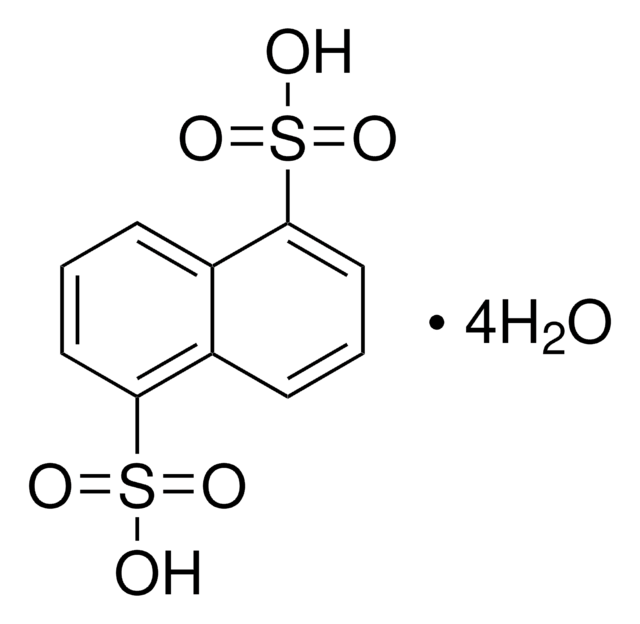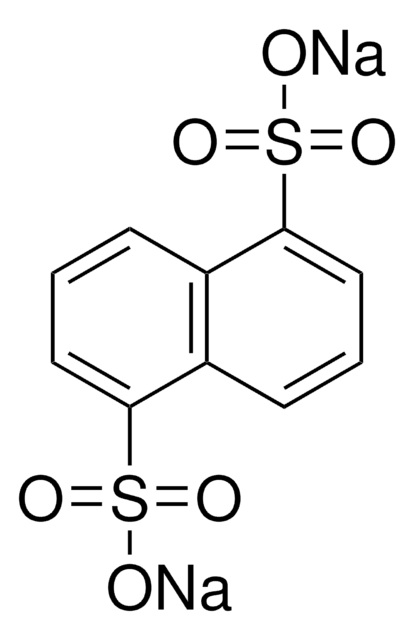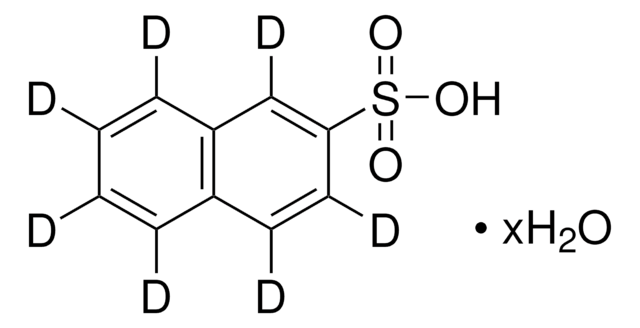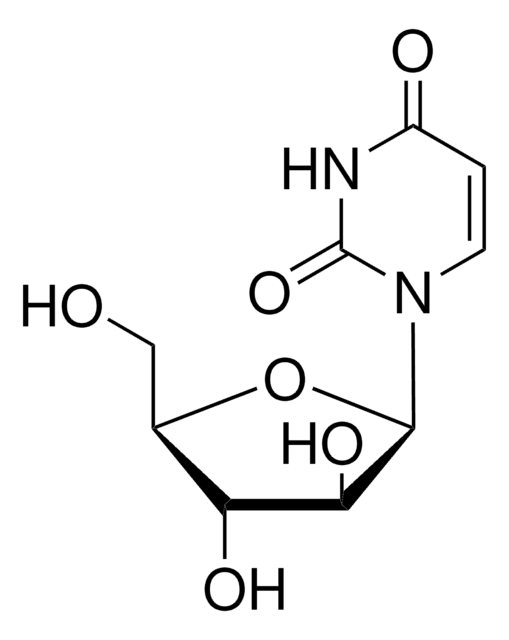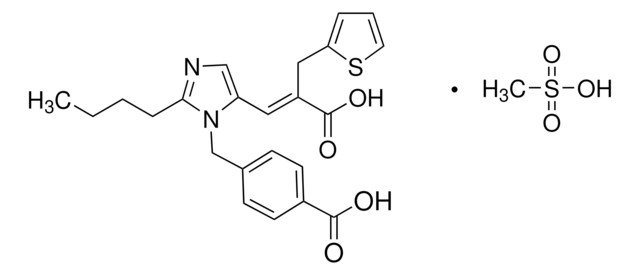249548
2-Naphthalenesulfonic acid
technical grade, 70%
Sinonimo/i:
β-Naphthalenesulfonic acid, 2-Naphthylsulfonic acid, 2-Sulfonaphthalene
About This Item
Prodotti consigliati
Grado
technical grade
Saggio
70%
Stato
solid
Solubilità
water: freely soluble(lit.)
Gruppo funzionale
sulfonic acid
Stringa SMILE
OS(=O)(=O)c1ccc2ccccc2c1
InChI
1S/C10H8O3S/c11-14(12,13)10-6-5-8-3-1-2-4-9(8)7-10/h1-7H,(H,11,12,13)
KVBGVZZKJNLNJU-UHFFFAOYSA-N
Informazioni sul gene
human ... EGFR(1956) , LCK(3932)
Descrizione generale
Proprietà fisiche
Avvertenze
Danger
Indicazioni di pericolo
Classi di pericolo
Eye Dam. 1 - Met. Corr. 1 - Skin Corr. 1A
Codice della classe di stoccaggio
8A - Combustible corrosive hazardous materials
Classe di pericolosità dell'acqua (WGK)
WGK 3
Punto d’infiammabilità (°F)
Not applicable
Punto d’infiammabilità (°C)
Not applicable
Scegli una delle versioni più recenti:
Possiedi già questo prodotto?
I documenti relativi ai prodotti acquistati recentemente sono disponibili nell’Archivio dei documenti.
I clienti hanno visto anche
Il team dei nostri ricercatori vanta grande esperienza in tutte le aree della ricerca quali Life Science, scienza dei materiali, sintesi chimica, cromatografia, discipline analitiche, ecc..
Contatta l'Assistenza Tecnica.

